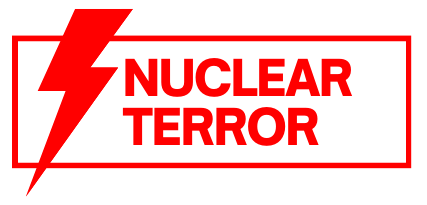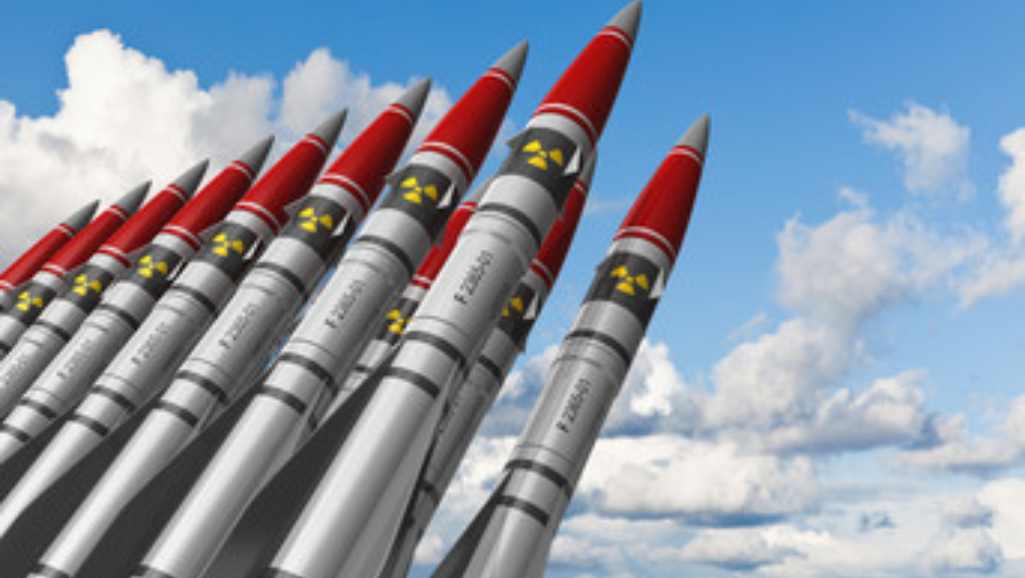Do you ever wonder which country possesses the most nuclear weapons? Look no further for an objective, analytical, and comprehensive answer. In this article, we will delve into the global landscape of nuclear armament, exploring the arsenals of the United States, Russia, China, France, the United Kingdom, India, Pakistan, and North Korea. Get ready to uncover the power dynamics and potential threats in the world of nuclear weaponry.
United States: The Global Superpower
The United States stands as the unrivaled global superpower, exerting its dominance not only through its economic and political influence but also through its global military capabilities. The United States has maintained its position as the world’s leading military power for decades, constantly investing in advanced weaponry and technology to ensure its global military dominance. One key aspect of this military dominance is its nuclear arsenal, which has played a crucial role in shaping the global security landscape.
The United States has been at the forefront of the nuclear arms race since the development of the atomic bomb during World War II. It was the first country to successfully test a nuclear weapon and remains the only country to have ever used nuclear weapons in warfare. Over the years, the United States has amassed a significant number of nuclear warheads, with estimates ranging from around 3,800 to 6,200 warheads in its stockpile.
This vast nuclear arsenal gives the United States a significant advantage in terms of deterrence and strategic capabilities. It allows the United States to project its military power globally and maintain a credible deterrent against potential adversaries. Additionally, the United States has a robust nuclear triad consisting of land-based intercontinental ballistic missiles, submarine-launched ballistic missiles, and strategic bombers, ensuring a diversified and resilient nuclear force.
Russia: A Formidable Adversary
Maintaining its position as a global superpower, the United States faces a formidable adversary in Russia, which possesses a significant nuclear arsenal. Russia’s role as a nuclear weapons supplier has been a cause for concern among the international community. Here are three key aspects of Russia’s nuclear strategy that set it apart from other countries:
- Modernization: Russia has been investing heavily in the modernization of its nuclear arsenal. It aims to enhance its nuclear capabilities by developing new delivery systems and upgrading existing ones. This modernization effort demonstrates Russia’s commitment to maintaining a strong nuclear deterrent.
- Tactical Nuclear Weapons: Unlike other countries, Russia has a significant number of tactical nuclear weapons. These weapons are designed for use on the battlefield and can be deployed in regional conflicts. This gives Russia a unique advantage in terms of flexibility and response options.
- Nuclear Doctrine: Russia’s nuclear doctrine emphasizes the use of nuclear weapons as a deterrent against potential aggression. It includes a strategy known as “escalate to de-escalate,” which suggests that Russia may consider using nuclear weapons in a limited manner to end a conflict on its terms.
China: Rising Nuclear Power
As you consider the global nuclear landscape, one cannot overlook the emergence of China as a rising nuclear power. With its vast resources, technological advancements, and strategic positioning, China’s nuclear ambitions have been steadily increasing in recent years. As of now, China possesses an estimated stockpile of around 350 nuclear warheads, making it the third-largest nuclear power in the world, behind the United States and Russia.
China’s nuclear program began in the 1950s, but it was only in the past few decades that significant progress has been made. The country has focused on developing a reliable and robust nuclear deterrence capability, emphasizing a minimum deterrent posture. China’s nuclear doctrine is based on a no-first-use policy, meaning that it pledges not to use nuclear weapons unless it is attacked with them first.
In terms of global nuclear proliferation, China’s rise as a nuclear power has raised concerns among other countries. The international community closely watches China’s nuclear activities, including its modernization efforts, to ensure compliance with non-proliferation treaties and norms. China’s increasing nuclear capabilities have prompted discussions on arms control and strategic stability in the region.
Overall, China’s nuclear ambitions and its growing nuclear arsenal have significant implications for global security. As China continues to assert its power on the world stage, it is crucial for the international community to engage in constructive dialogue and diplomacy to manage potential risks and maintain peace and stability.
| China | |
|---|---|
| Total Nuclear Warheads | 350 |
| Nuclear Weapons States Ranking | 3rd |
| Nuclear Doctrine | No-first-use policy |
| Compliance with Non-Proliferation Treaties | Monitored by international community |
France: The European Nuclear Force
France’s nuclear deterrence capabilities have long been a cornerstone of its defense strategy, making it a prominent nuclear force in Europe. With an estimated stockpile of around 300 nuclear warheads, France possesses the third-largest nuclear arsenal globally. Moreover, France actively participates in European nuclear cooperation, working closely with other European Union member states to maintain a collective security framework.
France’s Nuclear Deterrence
You can understand France’s nuclear deterrence by exploring its role as the European Nuclear Force. France’s nuclear doctrine plays a significant role in international security, as it aims to deter potential adversaries from attacking by maintaining a credible nuclear deterrent. Here are three key aspects of France’s nuclear deterrence:
- Independent Nuclear Deterrence: France’s nuclear doctrine emphasizes the need for an independent nuclear deterrent. This means that France maintains full control over its nuclear weapons and does not rely on any other country for their deployment or use.
- Flexible Response: France’s nuclear doctrine also includes the concept of flexible response. This means that France’s nuclear forces are designed to be able to respond to a wide range of threats, from conventional attacks to nuclear aggression, in a proportionate and flexible manner.
- Extended Deterrence: France’s nuclear deterrence also extends to its allies through its commitments to NATO. France has pledged to use its nuclear forces to deter any aggression against its allies, reinforcing the collective security of the alliance.
European Nuclear Cooperation?
Exploring the concept of European nuclear cooperation, the role of France as the European Nuclear Force becomes evident. France has long been a key player in European nuclear collaboration, with its own independent nuclear deterrent. The country’s nuclear arsenal consists of both submarine-launched ballistic missiles and air-launched cruise missiles. France’s commitment to maintaining its nuclear capabilities demonstrates its dedication to ensuring the security of not only itself but also its European allies. However, the impact of Brexit on European nuclear cooperation remains uncertain. The United Kingdom, another major nuclear power in Europe, has officially left the European Union, potentially affecting the dynamics of European nuclear collaboration. The future of European nuclear cooperation will depend on the ability of member states to navigate the challenges posed by Brexit.
| France’s Nuclear Arsenal |
| ———— | ——————— | ———————– |
| Delivery System | Submarine-launched ballistic missiles | Air-launched cruise missiles |
| Number of Warheads | Classified | Classified |
| Purpose | Deterrence and defense | Deterrence and defense |
| European Nuclear Force | Yes | Yes |
United Kingdom: The Trident Program
The United Kingdom’s Trident Program is a significant aspect of its nuclear weapons capabilities. This program, which was introduced in the 1980s, plays a crucial role in the United Kingdom’s nuclear strategy. Here are some key points to consider about the Trident Program:
- Deterrence: The Trident Program serves as a deterrent, ensuring that any potential aggressor is aware of the United Kingdom’s nuclear capabilities and the devastating consequences of any attack.
- Continuous at-sea deterrence: The Trident Program operates on a continuous at-sea deterrence (CASD) basis, meaning that at least one nuclear-armed submarine is always on patrol. This provides the United Kingdom with a constant and credible deterrent capability.
- Replacement plans: The United Kingdom is currently in the process of replacing its aging Vanguard-class submarines, which form the backbone of the Trident Program, with a new class of Dreadnought submarines. This replacement program will ensure the long-term viability and effectiveness of the Trident Program.
The Trident Program’s impact on the United Kingdom’s nuclear strategy cannot be overstated. It serves as a vital component of the country’s defense posture and ensures its ability to deter potential adversaries. The continuous at-sea deterrence and the ongoing replacement plans demonstrate the United Kingdom’s commitment to maintaining a robust and credible nuclear deterrent.
India: A Growing Nuclear Arsenal
India’s growing nuclear arsenal is a reflection of its increasing importance as a regional power. With its nuclear ambitions and participation in the South Asian nuclear race, India has been steadily expanding its nuclear capabilities. As of 2021, it is estimated that India possesses around 150 nuclear warheads, making it one of the countries with the highest number of nuclear weapons in the world.
To understand the scale of India’s nuclear arsenal, let’s take a look at the following table:
| Year | Number of Nuclear Warheads |
|---|---|
| 2000 | 30 |
| 2010 | 60 |
| 2020 | 120 |
| 2021 | 150 |
The table clearly illustrates India’s significant growth in its nuclear arsenal over the past two decades. This expansion can be attributed to several factors, including India’s desire to maintain a credible deterrence against its regional rivals, such as Pakistan and China.
India’s nuclear ambitions have been driven by its perceived security threats and the need to safeguard its national interests. As India continues to assert itself as a major global player, its growing nuclear arsenal serves as a symbol of its power and influence in the region.
Pakistan: Tensions in South Asia
You should focus on the tensions in South Asia, specifically regarding Pakistan’s nuclear weapons. The tensions between India and Pakistan have long been a cause for concern in the region. Both countries possess nuclear capabilities, which has led to an ongoing nuclear arms race in South Asia. Here are some key points to consider:
- Escalating Conflict: The rivalry between India and Pakistan dates back to their partition in 1947. Since then, they have engaged in multiple military conflicts, including several wars. This history of conflict has contributed to the ongoing tensions and mistrust between the two nations.
- Nuclear Deterrence: Both India and Pakistan have developed nuclear weapons as a means of deterrence. The possession of nuclear arsenals is seen as a way to maintain a balance of power and prevent large-scale wars. However, this has also increased the risks of accidental or unauthorized use of nuclear weapons.
- Arms Race: The development and expansion of nuclear capabilities by India and Pakistan has fueled an arms race in South Asia. Each country strives to enhance its nuclear arsenal, leading to a dangerous and volatile situation in the region.
The tensions between India and Pakistan, combined with the nuclear arms race, pose a significant threat to regional stability and global security. Efforts must be made to de-escalate the situation and promote dialogue between the two nations to reduce the risks associated with their nuclear weapons.
North Korea: The Rogue Nuclear State
North Korea’s nuclear program poses a significant threat to global security. Despite international sanctions against North Korea, the country has continued to develop its nuclear capabilities, conducting multiple nuclear tests and launching intercontinental ballistic missiles (ICBMs). This has raised concerns among the international community, as it suggests that North Korea is advancing towards the ability to deliver a nuclear warhead to targets as far as the United States.
The United Nations Security Council has imposed various sanctions on North Korea in an attempt to curb its nuclear program. These sanctions include restrictions on trade, finance, and technology transfers. However, North Korea has shown resilience in evading these measures, using illicit networks and smuggling to obtain the necessary resources and technology for its nuclear program.
The development of nuclear weapons by North Korea has further complicated the already tense situation in East Asia. It has led to heightened tensions between North Korea and its neighbors, particularly South Korea and Japan. Additionally, it has strained relations between North Korea and the United States, which has implemented its own set of sanctions in response to North Korea’s nuclear program.


